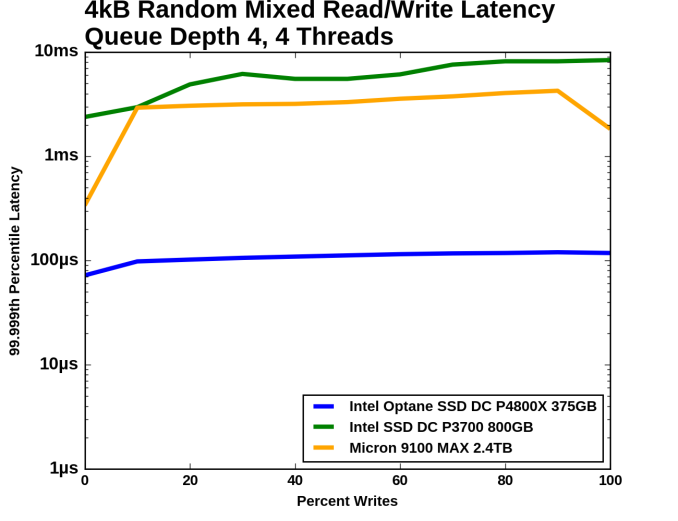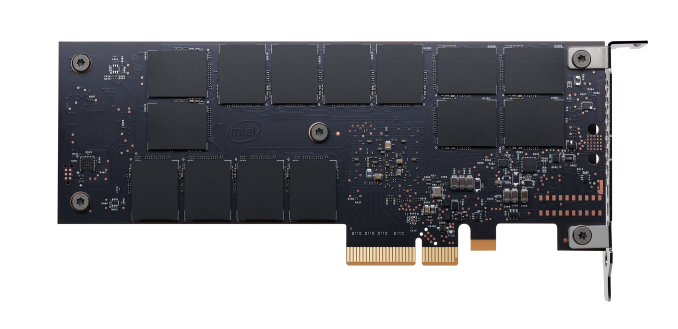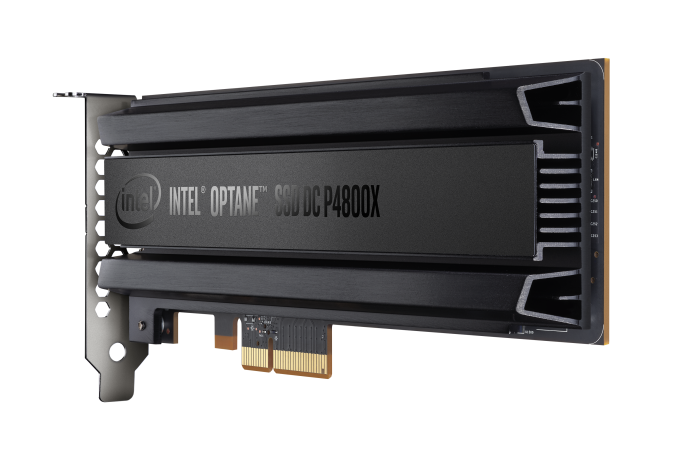The Intel Optane SSD DC P4800X (375GB) Review: Testing 3D XPoint Performance
by Billy Tallis on April 20, 2017 12:00 PM ESTFinal Words: Is 3D XPoint Ready?
The Intel Optane SSD DC P4800X is a very high-performing enterprise SSD, but more importantly it is the first shipping product using Intel's 3D XPoint memory technology. After a year and a half of talking up 3D XPoint, Intel has finally shipped something. The P4800X proves that 3D XPoint memory is real and that it really works. The P4800X is just a first-generation product, but it's more than sufficient to establish 3D XPoint memory as a serious contender in the storage market.
If your workload matches its strengths, the P4800X offers performance that cannot currently be provided by any other storage product. This means high throughput random access, as well as very strict latency requirements - the results Optane achieves for it's quality of service for latency on both reads and writes, especially in heavy environments with a mixed read/write workload, is a significant margin ahead of anything available on the market.

At 50/50 reads/writes, latency QoS for the DC P4800X is 30x better than the competition
The Intel Optane SSD DC P4800X is not the fastest SSD ever on every single test. It's based on a revolutionary technology, but no matter how high expectations were, very rarely does a first-generation product take over the world unless it becomes ubiquitous and cheap on day one. The Optane SSD is ultimately an expensive niche product. If you don't need high throughput random access with the strictest latency requirements, the Optane SSD DC P4800X may not be the best choice. It is very expensive compared to most flash-based SSDs.
With the Optane SSD and 3D XPoint memory now clearly established as useful and usable, the big question is how broad its appeal will be. The originally announcements around Optane promised a lot, and this initial product delivers a few of those metrics, so to some extent, the P4800X may have to grow its own market and reteach partners what Optane is capable of today. Working with developers and partners is going to be key here - they have to perform outreach and entice software developers to write applications that rely on extremely fast storage. That being said, there are plenty of market segments already that can never get enough storage performance, so anything above what is available in the market today will be more than welcome.
There's still much more we would like to know about the Optane SSD and the 3D XPoint memory it contains. Since our testing was remote, we have not yet even had the chance to look under the drives's heatsink, or measure the power efficiency of the Optane SSD and compare it against other SSDs. We are awaiting an opportunity to get a drive in hand, and expect some of the secrets under the hood to be exposed in due course as drives filter through the ecosystem.












117 Comments
View All Comments
masouth - Tuesday, May 2, 2017 - link
With ddriver and RAM? I've only skimmed ddriver's posts but I believe a summary would be.1) RAM is faster than this product so adding more RAM would be a better option than adding a middle man that is only faster than the data storage device but still slower than RAM.
2) RAM has much more endurance than these drives
3) Servers tend to stay on 24/7 and have back up power solutions (UPS, generators, etc) to allow for a RAM data flush to a non-volatile data storage device prior to any power loss so it renders Optane's advantage of being non-volatile fairly moot.
ddriver believes these reasons result in this product having very niche uses yet Intel keeps hyping this as a solution for every user while hiding behind synthetic benchmarks instead of demonstrating real world applications which would reveal that more RAM would lead to a superior solution in many/most cases.
I may have missed something but I think that sums up what I have read so far.
masouth - Tuesday, May 2, 2017 - link
oops, in the last part I forgot that he saying they are using the benchmarks to hide the fact that it's not as far ahead of NAND speads (although it is ahead) as they claim.AnTech - Saturday, April 29, 2017 - link
Is Intel XPoint Optane a fiasco? Check out:Intel crosses an unacceptable ethical line
http://semiaccurate.com/2017/03/27/intel-crosses-u...
Santoval - Tuesday, June 6, 2017 - link
A few days ago I registered here on Anandtech and I found it very odd that such a very knowledgeable website provided (only) unsecure cleartext registration and log-in forms. I felt awkward and uncomfortable, because that is a very no no for me. I wanted to register though, so I used the Tor Browser, to risk being sniffed only by the exit node. Now I see that Charlie (which I used to read ages ago) has taken this quite a few steps further..The guy sells $1,000 annual "professional subscriptions" on a completely private, crystal clear transparent, as public as it gets, 100% unencrypted page. I am utterly dumbfounded... And I lost all appetite to read his article or anything from him ever again. For life. Click your link and then click the "Become a subscriber" link on the top to enjoy this adorable (in)security atrocity..
tsk2k - Thursday, April 20, 2017 - link
You forgot one thing, CRYSIS 3 FPS?!?!philehidiot - Thursday, April 20, 2017 - link
I find the go faster stripes on my monitor screen make a massive difference to my FPS. I have many, many more FPS as a result. It's due to the quality of the paint - Dulux one-coat just bring down my latency to the point whe....... I've sniffed too much of this paint, haven't I?
ddriver - Friday, April 21, 2017 - link
If you use this instead of ram it will most likely be 3 FPS indeed :)mtroute - Friday, April 21, 2017 - link
never has Intel claimed that this product is faster the DRAM...Your indignation is not proportional to even your perceived slight by Intel. You work for SK Hynix or more likely Powerchip don't you?ddriver - Sunday, April 23, 2017 - link
Nope, I am self employed. I never accused intel of lying about hypetane being faster than dram. I accused them of lying how much faster than NAND it is and how close to dram it is. And I have only noted that it is hundreds of times slower than dram, making the population of dimm slots (which some intel cheerleaders claim will magically make hypetane faster) is a very bad prospect in 99.99% of the use cases.I don't have corporate preferences either, IMO all corporations are intrinsically full of crap, yet the amount of it varies. I also do realize that "nicer" companies are only nicer because they are it a tough situation and cannot afford to not be nice.
What annoys me is that legally speaking, false advertising is a crime, yet everyone is doing it, because it has so many loopholes, and what's worse, the suckers line up to cheer at those lies.
MobiusPizza - Sunday, April 23, 2017 - link
It is still a first gen product and I think it has potential in servers and scientific computing. First gen SSDs were also crappy with low capacity. Give it 5 years I think it will make more sense.